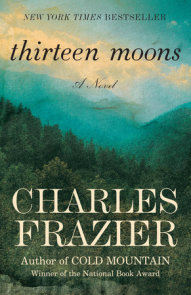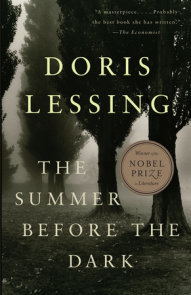TEACHING GUIDE
NOTE TO TEACHERS
The discussion topics, author biography, historical material, and bibliography that follow are meant to guide your students in their approach to David Guterson’s Snow Falling on Cedars. We hope that they will aid class discussion and inspire independent reflection and writing about a novel that has been widely praised for its eloquent dramatization of themes of love, justice, racism, community, and conscience.
ABOUT THIS BOOK
The place is the fictional island of San Piedro off the coast of Washington, a community of “five thousand damp souls” [p. 5] who support themselves through salmon fishing and berry farming. The time is 1954, nine years after the end of World War II, in which some of San Piedro’s young men lost their lives and many others were irreparably injured, physically as well as emotionally. Now one of those survivors—a gill-netter named Carl Heine—has drowned under mysterious circumstances and another fisherman is on trial for his murder. The fact that the accused, Kabuo Miyamoto, is a first-generation Japanese American is not mere coincidence. To the local coroner, Heine’s injuries suggested that the sheriff look for “a Jap with a bloody gun butt” [p. 59]. And among San Piedro’s Anglos hostility against Japanese still runs high, even if, like Kabuo, those Japanese were born and raised on the island and fought for the United States during the war. Kabuo’s trial, in a sense, is a continuation of the white community’s quarrel with its Asian neighbors.
But the Japanese—and particularly Kabuo and his wife, Hatsue—have their own grounds for resentment, stemming from years of bigotry that culminated during World War II, when thousands of Japanese Americans were interned in government relocation camps and Kabuo was effectively robbed of land that his father had worked and paid for. Even as the state presents its case against Kabuo Miyamoto, the reader is compelled to recognize the Miyamotos’ case against their white neighbors, the best of whom stood by as an entire community was driven into exile. Their case never receives a public hearing: it can only be prosecuted in the courtrooms of memory and conscience.
It is not only the Japanese who remember. Among the trial’s observers is Ishmael Chambers, the embittered war veteran who runs the San Piedro Review. Ishmael is not an objective witness. He grew up with Carl and Kabuo. He lost an arm on Tarawa to Japanese machine-gun fire. Most important, Hatsue was Ishmael’s boyhood love and he has never come to terms with losing her. In the course of the trial he will find himself torn between rancor and conscience, loath to forgive Hatsue yet unable to condemn her husband.
ABOUT THIS AUTHOR
David Guterson was born in Seattle in 1956. He received his M.A. from the University of Washington, where he studied under the writer Charles Johnson. It was there that he developed his ideas about the moral function of literature: “Fiction writers shouldn’t dictate to people what their morality should be,” he said in a recent interview. “Yet not enough writers are presenting moral questions for reflection, which I think is a very important obligation.”
After moving to Bainbridge Island in Puget Sound, Guterson taught English at the local high school and began writing for Sports Illustrated and Harper’s magazine, where he is now a contributing editor. Snow Falling on Cedars won the 1995 PEN/Faulkner Award.
TEACHING IDEAS
Historical Background
Between 1901 and 1907, almost 110,000 Japanese immigrated to the United States. They were drawn by promises of ready work—American railroads actually sent recruiters to Japanese port cities, offering laborers three to five times their customary wages—and by worsening economic conditions in their homeland, which was undergoing social upheaval in the aftermath of the Meiji Restoration. Although many originally came as dekaseginin—temporary sojourners—work was plentiful, not only on the railroads, but in the lumber camps, salmon fisheries, and fruit orchards of Oregon and Washington. Increasingly, the newcomers stayed on. Many purchased their own farms. In time, these issei—first-generation Japanese—started families.
Very quickly the newcomers encountered antagonism. Although Japanese constituted less than two percent of all immigrants to the U.S., newspapers trumpeted an “invasion.” The mayor of San Francisco proclaimed that “the Japanese are not the stuff of which American citizens can be made.” The Sacramento Bee warned that “the Japs . . . will increase like rats” if allowed to settle down. The Asiatic Exclusion League agitated for legislation to halt all Japanese immigration. Politicians ran for office on anti-Japanese platforms. In 1923, the state of Oregon prohibited issei from legally buying land. A year later, Congress passed the National Origins Act, which banned all immigration from Japan.
Following the Japanese surprise attack on Pearl Harbor on December 7, 1941, hostility turned into paranoia—and paranoia became law. Japanese who had lived in America for thirty years were accused of spying for their native land. The day after Pearl Harbor, the U.S. Treasury Department ordered all Japanese-owned businesses closed and all issei bank accounts frozen. The U.S. government had already compiled lists of Japanese whose loyalties might be suspect, and more than 1,000 businessmen, community leaders, priests, and educators were arrested up and down the West Coast.
In February 1942, President Franklin Roosevelt signed Executive Order 9066, which empowered the government to remove “any and all” persons of Japanese ancestry from sensitive military areas in four western states. Japanese residents had only days in which to evacuate. They were compelled to sell their land and businesses for a fraction of their value, or to lease them to neighbors who would later refuse to pay their rent. All told, some 110,000 Japanese Americans were deported from their homes to hastily built camps such as Tule Lake and Manzanar, where they lived behind barbed wire for the duration of the war.
Neither Germans nor Italians living in this country were subject to similar restrictions, and recently declassified documents reveal that the Japanese population was never considered a serious threat to American security. In all of World War II, no person of Japanese ancestry living in the United States, Alaska, or Hawaii was ever charged with any act of espionage or sabotage. As one issei later wrote, the victims of Executive Order 9066 were people whose “only crime was their face.”
In 1988, the U.S. government formally apologized to Japanese citizens who had been deprived of their civil liberties during World War II.
*This information was gathered from Lauren Kessler, Stubborn Twig: Three Generations in the Life of a Japanese-American Family. New York, Penguin Books, 1996.
DISCUSSION AND WRITING
For Discussion
1.Snow Falling on Cedars opens in the middle of Kabuo Miyamoto’s trial. It will be pages before we learn the crime of which he has been accused or the nature of the evidence against him. What effect does the author create by withholding this information and introducing it in the form of flashbacks? Where else in the narrative are critical revelations postponed?
2.The trial functions both as this novel’s narrative frame and as its governing metaphor. How does the author interweave these two functions? Which characters are aware that what is at stake is more than one man’s guilt? How does the entire notion of a murder trial—in which facts are interpreted differently by opposing attorneys—fit into this book’s thematic structure?
3.When the trial begins, San Piedro is in the midst of a snowstorm, which continues throughout its course. What role does snow play—both literally and metaphorically—in the book? Pay particular attention to the way in which snow blurs, freezes, isolates, and immobilizes, even as it holds out the promise of an “impossible winter purity” [p. 8].
4.Guterson divides his island setting into four zones: the town of Amity Harbor; the sea; the strawberry fields; and the cedar forest. What actions take place in these different zones? Which characters are associated with them? How does the author establish a different mood for each setting?
5.In his first description of Carl Heine [pp. 14-16], Guterson imparts a fair amount of what is seemingly background information: We learn about his mother’s sale of the family strawberry farm; about Carl’s naval service in World War II; and about his reticence. We learn that Carl is considered “a good man.” How do these facts become crucial later on, as mechanisms of plot, as revelations of the dead man’s character, and as clues to San Piedro’s collective mores? Where else does the author impart critical information in a casual manner, often “camouflaging” it amid material that will turn out to have no further significance? What does this method suggest about the novel’s sense of the meaningful—about the value it assigns to things that might be considered random or irrelevant?
6.When Carl’s body is dredged from the water, the sheriff has to remind himself that what he is seeing is a human being. While performing the autopsy, however, Horace Whaley forces himself to think of Carl as “the deceased, . . . a bag of guts, a sack of parts” [p. 54]. Where else in Snow Falling on Cedars are people depersonalized—detached from their identities—either deliberately or inadvertently? What role does depersonalization play within the novel’s larger scheme?
7.Kabuo and Hatsue also possess—and are at times driven by—certain values. As a young girl, Hatsue is taught the importance of cultivating stillness and composure in order “to seek union with the Greater Life” [p. 83]. Kabuo’s father imparts to him the martial codes of his ancestors. How do these values determine their behavior, and particularly their responses to internment, war, and imprisonment? How do they clash with the values of the Anglo community, even as they sometimes resemble them?
8.Racism is a persistent theme in this novel. It is responsible for the internment of Kabuo, Hatsue, and their families, for Kabuo’s loss of his land, and perhaps for his indictment for murder. In what ways do the book’s Japanese characters respond to the hostility of their white neighbors? How does bigotry manifest itself in the thoughts and behavior of characters like Etta Heine—whose racism is keenly ironic in view of her German origins—Art Moran, and Ishmael himself? Although almost all the novel’s white characters are guilty of racism, only one of them—Etta Heine—emerges unsympathetically. How do her values and motives differ from those of other San Piedrans?
9.Ishmael’s adolescent romance with Hatsue has been the defining fact of his life, his loss of her even more wounding than the loss of his arm. Yet when Hatsue first remembers Ishmael, it is only as a “boy” [p. 86] and her recollection of their first kiss is immediately supplanted by the memory of her wedding night with Kabuo. What does the disparity between Hatsue’s memories and Ishmael’s suggest about the nature of love? Where else in this novel do different characters perceive the same events in radically different ways—and with what consequences?
10.Ishmael’s attraction to Hatsue is closely connected to a yearning for transcendence, as indicated by their early conversation about the ocean. Ishmael says, “It goes forever,” while Hatsue insists, “It ends somewhere” [p. 97]. Typically, it is Ishmael who wishes to dissolve boundaries, Hatsue who keeps reasserting them, as when she gently withholds the embrace that Ishmael so desperately wants. What limits might Ishmael wish to transcend, even as a boy? Does he ever manage to do so? Does Snow Falling on Cedars hold the promise of transcendence for its characters or at best offer them a reconciliation with their limits?
11.What is the significance of the novel’s last words: “accident ruled every corner of the universe except the chambers of the human heart”?
Suggestions for Writing
1.Snow Falling on Cedars begins in the middle of the story (a narrative technique known as en media res). To complete the narrative, the author must at some point write about past events as well as present. How does this technique affect the novel’s plot (does it heighten the suspense in any way)? What other novels or short stories begin this way?
In their journals, have your students list five specific examples of rhetorical devices (such as point-of-view, metaphor, simile, multiple narrators) that Guterson employs in this novel. Have the students write a one-page essay discussing which rhetorical device is most effective and what it adds to the novel (building action, enhancing the natural world, aiding in characterization).
Idea for creative writing: Have your students write a short story utilizing one or more of the rhetorical devices that you have discussed in class.
2.Have each student write down a stereotype on a sheet of paper. Picking from their examples, ask the students if they think any of the stereotypes would apply to their friends or to themselves. Take this opportunity to discuss the various forms of stereotype which could involve gender, geography, social class, and race.
Have your students write down the way in which they themselves or their friends feel when stereotyped. Also, have them write down specific ways in which these stereotypes are similar to and different from the ones that affected the Miyamotos.
3.One of the major themes in Snow Falling on Cedars is racism. Have your students give an example of another work that has racism as a theme—writing down one author, his/her work, and the type of racism therein (for example, Harper Lee, To Kill A Mockingbird, racism against African Americans). Next discuss the reasons why writers might choose to include the topic of racism in their works.
4.Ishmael is characterized as an unobjective reporter. That is, he lets his personal beliefs and feelings influence his writing for the island’s newspaper. Pick a current national event and have your students recount the way in which this event is portrayed in your local news. Does the news seem objective to them, or are there biases that they notice? Have your students watch a short news segment on TV or read a short article in the local paper. In their journals, have them record the tone (is it positive, negative, formal, informal, etc.) of the article/segment and discuss the ways in which this tone influences their understanding and feelings regarding the subject of the article.
5.Ask your students to list the ways in which the San Piedro Island community supports and opposes the Miyamotos. Discuss these points: If the Miyamotos were living in a large city would they have greater community support or greater opposition? Similarly, might the Miyamotos find greater support living in the deep rural South or the more metropolitan and urban North? Have the students record their thoughts/reasons in their journals.
OTHER TITLES OF INTEREST
The Country Ahead of Us, the Country Behind, (Vintage) 0-679-76718-5
Snow Falling On Cedars (abridged audio), 0-679-44775-X
Snow Falling On Cedars (unabridged audio), 0-375-40468-6
John Armor and Peter Wright, Manzanar; Timothy Egan, The Good Rain; Hazel Heckman, Island in the Sound; Lauren Kessler, Stubborn Twig: Three Generations in the Life of a Japanese-American Family; Herman Melville, Moby-Dick; Lisa See, On Gold Mountain; Ronald Takaki, Strangers From a Different Shore; Studs Terkel, The Good War; Joe Upton, Alaska Blues.
×
Become a Member
Just for joining you’ll get personalized recommendations on your dashboard daily and features only for members.
Find Out More Join Now Sign In



















